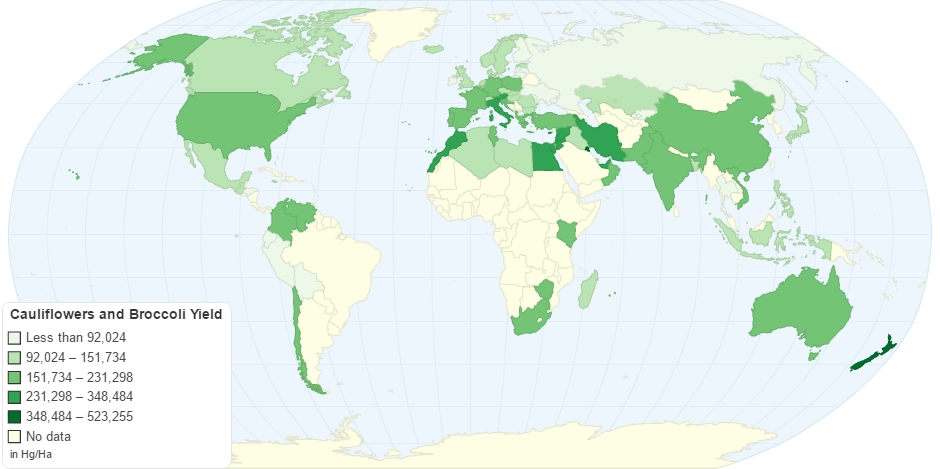This chart shows Cauliflowers and Broccoli Yield by Country.
Cauliflower is one of several vegetables in the species Brassica oleracea in the genus Brassica, which is in the family Brassicaceae. It is an annual plant that reproduces by seed. Typically, only the head is eaten.
The cauliflower head is composed of a white inflorescence meristem.Cauliflower heads resemble those in broccoli, which differs in having flower buds. Brassica oleracea also includes broccoli, brussels sprouts, cabbage, collard greens, and kale, though they are of different cultivar groups.
100 grams of raw white cauliflower provides 25 calories, is low in fat, carbohydrates, dietary fiber and protein.It has a high content of vitamin C and moderate levels of several B vitamins and vitamin K. Cauliflower contains several phytochemicals, common in the cabbage family, that are under preliminary research for their potential properties, including isothiocyanates and glucosinolates.
Broccoli is an edible green plant in the cabbage family whose large flowering head is eaten as a vegetable.The word broccoli comes from the Italian plural of broccolo, which means "the flowering crest of a cabbage", and is the diminutive form of brocco, meaning "small nail" or "sprout".Broccoli is often boiled or steamed but may be eaten raw.
Broccoli is classified in the Italica cultivar group of the species Brassica oleracea. Broccoli has large flower heads, usually green in color, arranged in a tree-like structure branching out from a thick, edible stalk. The mass of flower heads is surrounded by leaves. Broccoli resembles cauliflower, which is a different cultivar group of the same species.
Broccoli is a result of careful breeding of cultivated Brassica crops in the northern Mediterranean starting in about the 6th century BC.Since the time of the Roman Empire, broccoli has been considered a uniquely valuable food among Italians.Broccoli was brought to England from Antwerp in the mid-18th century by Peter Scheemakers.
9 years ago

